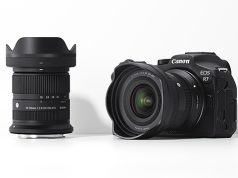J. Adelaide Fuller, 31, goes by “Miss Plum” on Flickr.com. The Philadelphia-based photographer’s been sharing her digital photos using the online gallery since it launched in Vancouver, B.C., in 2004 as a beta site for aspiring and professional picture takers. “I came across Flickr on the Web site of an artist friend who was using it,” says Fuller, who tested out other sites like Fotoamigo.com and Fotolog.com before becoming a registered Flickr member at $24.95 a year.
“Flickr is the sole reason that I ever even started selling and showing my work,” Fuller says, “thanks to good feedback from other photographers, and family and friends who were able to see my work and send encouragement.” With her Canon Rebel XT in tow, Fuller posts new shots to her site several times a week.
And she’s not alone.
Fuller is now one of more than 11 million members belonging to the online photo community. In 2005, the start-up caught the attention of Sunnyvale, Calif., giant Yahoo!, which purchased Flickr for an undisclosed amount estimated to be as much as $30 million. According to a Comscore report from July of this year, Yahoo!-owned Flickr now entertains at least 35 million visitors worldwide. Non-members visit the site to browse photos, post pictures (there’s a limited membership available at no cost) and comment on photo blogs (or “phlogs”) from around the world. The question for many within the photo and imaging industries, particularly retailers, is just how much of an impact online photo galleries have on the way people share and store pictures.
“Photographers love to share their images with the world,” admits Megan Busath, senior PR manager for Flickr. “Whether keeping in touch with friends and family, building communities around peoples’ interests, or capturing breaking news, Flickr enables people around the world to connect and communicate.” The site also offers multilingual support so members and visitors alike can access a growing number of images from anywhere they have Internet access. The site also lets members upload photos from cell phones.
Flickr is just one of dozens of online sites that offer galleries, blogging and imaging opportunities to photographers and their friends. And while the photography industry has certainly changed with less people printing photos in favor of sharing them online, several manufacturers are introducing even newer ways to bridge this gap.
Prints Still at the Heart
“The shift to digital is enabling customers to express themselves in ways that were not possible before,” says Eric Kintz, vice president of marketing, digital photography and entertainment at HP in Palo Alto, Calif. He says longtime companies like HP have had to completely rethink the way they do business with a customer base that increasingly wants access to multimedia products. For example, HP recently allowed customers to access pop vocalist Gwen Stefani’s tour photos to combine, store or print with their own shots (www.hp.tabblo.com/gwen).
Kintz says HP also recently launched its Photosmart A826 Home Photo Center, an egg-shaped printer that’s designed like a photo studio, featuring a color touch screen where users can edit and personalize photos for print from home. “We designed a product that would fit in the kitchen with an easy two-minute or less experience,” says Kintz. “We have also adopted touch screens for our cameras (including the new R937) and printers.”
Unlike many traditional imaging companies who are finding ways to compete with online domains, Mitsubishi’s been at an advantage from the beginning. “We didn’t start in the photo business,” says Darla Achey, marketing communications specialist of Mitsubishi Digital Electronics America in Irvine, Calif. “Our entry has been with digital products.” Achey says the biggest shift she sees in the industry impacts photo retailers. “End users were doing more printing at home,” she says. “A lot of consumer printers came in at a good price point, but they soon found that keeping up with paper and media were expensive.” Achey says consumers are starting to look for ways to print outside the home. This could be a benefit for brick-and-mortar stores that partner with online sites for photo pick up.
“Consumers are becoming savvier about what they want,” says Achey, particularly professional photographers. Mitsubishi has developed several new solutions for photographers who print high-quality prints on the go, including the CP9800DW, a professional printer that is portable. She says wedding photographers, for example, are fielding requests to have pictures printed at receptions. It’s just one of several signs of how accustomed consumers are to having immediate results.
Fuller, who sells her work at art shows and through Etsy.com, admits she prints less photos now than when she used film. But that doesn’t mean she never prints her photos. Quite the contrary. “I usually have something that needs printing at least once a month,” she says.
Kevin Frisch, vice president of marketing for Snapfish, an online gallery and imaging site based in San Francisco, says, “One of the many benefits to digital is choice, including the choice of where to print photos: online, at home or in retail.”
To capitalize on all three components to imaging today, HP acquired Snapfish in 2005. With more than 40 million members, Snapfish has partnered with dozens of retailers, including Wal-Mart, Walgreens, Comcast, Staples, Office Max and Circuit City. “Print growth on the network nearly tripled in the last year,” says Frisch, who attributes that growth to convenience (customers can order prints at home to be mailed or picked up at a partner site) and opportunity. Snapfish is the only online photo service to offer a paid subscription plan for storage and sharing of videos taken with digital cameras and camera phones.
“Consumers are looking for ways to extend their memories beyond special dates and events,” says Frisch. By providing a service that allows users to share their images immediately, where and when they want, these online photo sites are going one step further to complete the digital experience. It may work so well because these sites and the digital photography industry are based on the exact same concept: immediacy.
“Online offers consumers the convenience of ordering from home,” says Frisch, including prints and photo products that are mailed directly to them in a few days.
The Mom Factor
Gina Guglielmi is a 39-year-old mom living in Southern New Jersey. By all accounts, Guglielmi is the demographic most online sites, like Kodak’s Picture Gallery, are hoping to court. She says she first started posting photos online after the birth of her son in 2005. “It’s easy to upload and understand and share pics,” says Guglielmi. “And best of all, it’s free.”
HP’s Kintz says, “One of our key targets is the busy mom. She owns the burden and joy of photo distribution, sharing, preserving for self, kids and extended family.” He says while maintaining family photos has long been an integral part of family life, most parents don’t have time to create the photo albums of yesteryear. And as more and more families find themselves living in vastly different parts of the country and world, having an online destination where extended relatives and grandparents can go to access photos is becoming a priority for most generations who have long owed computers at home.
“I sometimes print my pictures,” says Guglielmi, “but more often than not I just e-mail them using the (Kodak) service. I don’t want to pay for the pictures, so I copy and load them into the disk and insert it in my HP Photosmart 325 printer and print my own. I don’t print many pics this way because photo paper is expensive, but I will if it’s a gift for a Papa or Nana.” Usually, Guglielmi says, when given the choice, most relatives (including Papa and Nana) order prints right from the photo site, sparing this mom any extra expense and time.
Though many of these online sites began with the intention of ordering prints online, Flickr only recently added this feature to its gallery. “Unlike traditional photo sites which were created primarily for sharing photos of life events and special occasions (i.e., weddings, new babies, graduations, etc.), Flickr also enables ongoing sharing and day-to-day communicating,” says Busath. “Members can do more with their photos to turn them into fun keepsakes. Through our partnership with Target, you can pick up the prints at a Target location or have them sent directly to your house.”
Busath predicts the industry will be faced with even more revolutionary tools for sharing, searching and printing photos, not only when it comes to “phlogging,” as it’s become known, but also as far as Web hosting and printing. But like every new change in an ever-evolving industry—and often without the acknowledgement of consumers who reap the rewards—adjustments are being made by manufacturers and retailers alike.
“There is still a challenge across the road for the imaging industry,” says Mitsubishi’s Achey. “But we need to make it super simple and cost-effective. And that’s a challenge for everybody.”
Natalie Hope McDonald is a freelance writer based in Philadelphia. Her photo blog can be found online at www.flickr.com/photos/mzfaustus.





